Gutter Inspection : Importance, Process, and Maintenance Tips
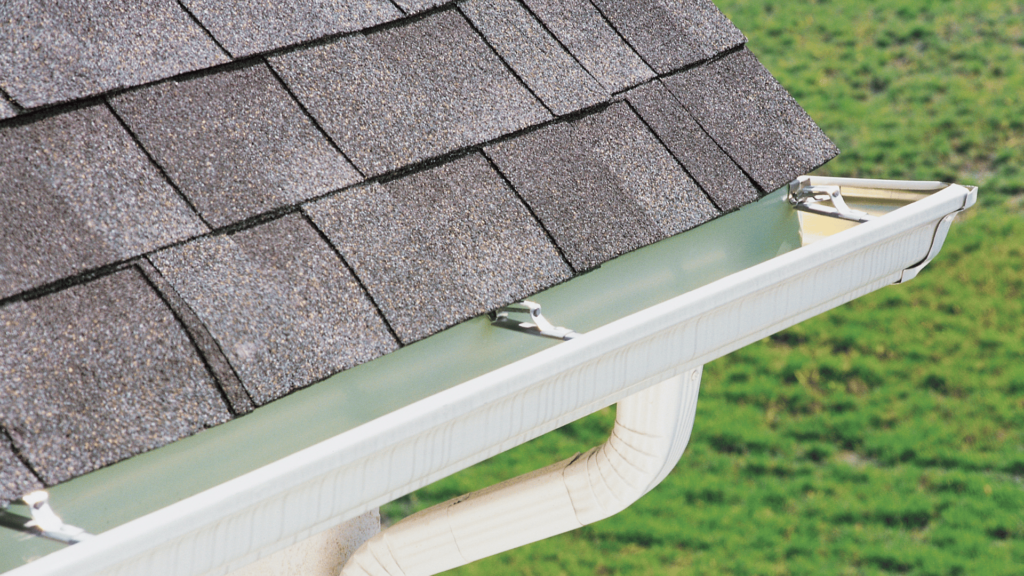
Introduction Gutter Inspection are an essential component of your home’s drainage system, directing rainwater away from the roof, walls, and foundation. However, over time, they can develop clogs, leaks, and structural damage. Regular gutter inspections are crucial in maintaining their functionality and preventing costly repairs. This comprehensive guide covers everything you need to know about gutter inspections, including their importance, how to perform a thorough inspection, common gutter issues, and maintenance tips to keep your home safe from water damage. Why Gutter Inspection is Essential 1. Prevents Water Damage Gutters are designed to channel water away from your home, but if they are clogged or damaged, water can overflow and cause serious issues such as roof leaks, basement flooding, and foundation damage. 2. Protects Your Roof A well-maintained gutter system prevents standing water on the roof, reducing the risk of leaks, mold growth, and premature deterioration of shingles. 3. Avoids Structural Issues Water pooling around your home’s foundation can lead to cracks, soil erosion, and even structural instability. Gutter inspections ensure proper drainage, protecting the foundation. 4. Extends Gutter Lifespan Regular inspections help identify minor issues before they escalate, allowing for timely repairs and prolonging the life of your gutter system. 5. Reduces Pest Infestation Clogged gutters can become breeding grounds for mosquitoes, rodents, and insects. Routine inspections help eliminate debris that attracts pests. 6. Prevents Ice Dams in Winter In colder regions, clogged gutters can lead to ice dams, which can cause severe damage to your roof and gutter system. Regular checks ensure proper water flow and minimize winter-related risks. How to Conduct a Gutter Inspection 1. Schedule Inspections Regularly It’s best to inspect your gutters at least twice a year—once in the spring and again in the fall. Additional checks after heavy storms or snowfall can help identify immediate problems. 2. Gather Necessary Tools To conduct a thorough inspection, you’ll need: 3. Check for Visible Debris and Clogs Start by removing any leaves, twigs, dirt, and other debris that could block water flow. A clogged gutter can lead to water overflow and eventual damage. 4. Look for Signs of Rust or Corrosion Metal gutters can develop rust spots over time, which can weaken the structure. If rust is present, consider applying a rust-resistant coating or replacing the affected section. 5. Inspect for Cracks and Holes Even small cracks or holes can lead to leaks that cause significant water damage. Seal minor leaks with waterproof gutter sealant or replace damaged sections as needed. 6. Check for Sagging or Loose Gutters Gutters should be securely fastened to your home. Loose or sagging gutters indicate that the brackets or screws may need tightening or replacement. 7. Examine Downspouts for Blockages Ensure that downspouts are directing water away from the foundation. Use a garden hose to flush out any debris and confirm that water flows freely. 8. Assess Water Drainage After clearing debris, run water through the gutters using a hose to check for proper drainage. Any water pooling or overflowing indicates a blockage or improper slope. 9. Look for Mold or Mildew Growth Excess moisture due to clogged or leaking gutters can encourage mold and mildew growth. Address any signs of fungal buildup promptly to prevent health hazards. Common Gutter Problems and Solutions 1. Clogged Gutters Cause: Accumulation of leaves, dirt, and debris. Solution: Clean gutters regularly and install gutter guards to minimize buildup. 2. Leaky Gutters Cause: Cracks, holes, or separated seams. Solution: Use gutter sealant or patching materials to fix leaks. Consider replacing heavily damaged sections. 3. Sagging Gutters Cause: Loose brackets or excess weight from debris. Solution: Tighten or replace brackets and ensure proper slope for water flow. 4. Poorly Sloped Gutters Cause: Incorrect installation or shifting over time. Solution: Adjust gutter pitch to ensure water flows toward downspouts. 5. Overflowing Gutters Cause: Clogs, improper slope, or undersized gutters. Solution: Regular cleaning, re-sloping, or upgrading to larger gutters if needed. 6. Detached or Loose Downspouts Cause: Weak fasteners or improper attachment. Solution: Secure downspouts with new brackets or extend them further away from the foundation. 7. Ice Dams in Winter Cause: Blocked gutters preventing proper drainage. Solution: Insulate the attic to prevent heat loss and ensure gutters are clear before winter. DIY vs. Professional Gutter Inspection DIY Gutter Inspection A DIY approach can be cost-effective if you have the right tools and safety knowledge. It allows you to monitor your gutters frequently and address minor issues early. Pros: Cons: Professional Gutter Inspection Hiring a professional gutter service ensures a thorough inspection and expert recommendations for maintenance and repairs. Pros: Cons: Gutter Maintenance Tips 1. Clean Gutters Regularly Routine cleaning prevents blockages and extends the lifespan of your gutters. Aim for at least two cleanings per year. 2. Install Gutter Guards Gutter guards help reduce debris buildup, minimizing maintenance needs and preventing clogs. 3. Check Fasteners and Brackets Ensure that all screws, brackets, and fasteners are secure to prevent sagging or detachment. 4. Repair Leaks Promptly Small leaks can quickly become major problems. Use sealant or replace damaged sections as needed. 5. Trim Overhanging Branches Tree branches dropping leaves and twigs into your gutters can lead to frequent clogs. Keep nearby trees trimmed. 6. Ensure Proper Downspout Drainage Downspouts should extend at least five feet from your home’s foundation to prevent water pooling around the base. 7. Monitor Gutters After Heavy Storms After storms, inspect gutters for debris buildup, leaks, or damage to ensure they function properly. 8. Consider a Gutter Maintenance Plan If you prefer professional upkeep, many companies offer maintenance plans that include inspections, cleaning, and repairs. Conclusion Gutter inspection is a crucial aspect of home maintenance that protects your roof, walls, and foundation from water damage. By performing regular inspections and addressing minor issues early, you can extend the lifespan of your gutters and prevent costly repairs. Whether you choose to inspect your gutters yourself or hire a professional, staying proactive about maintenance will ensure your home remains in top condition. Implementing the best practices
Gutter Clearing : Benefits, Methods, and Maintenance Tips
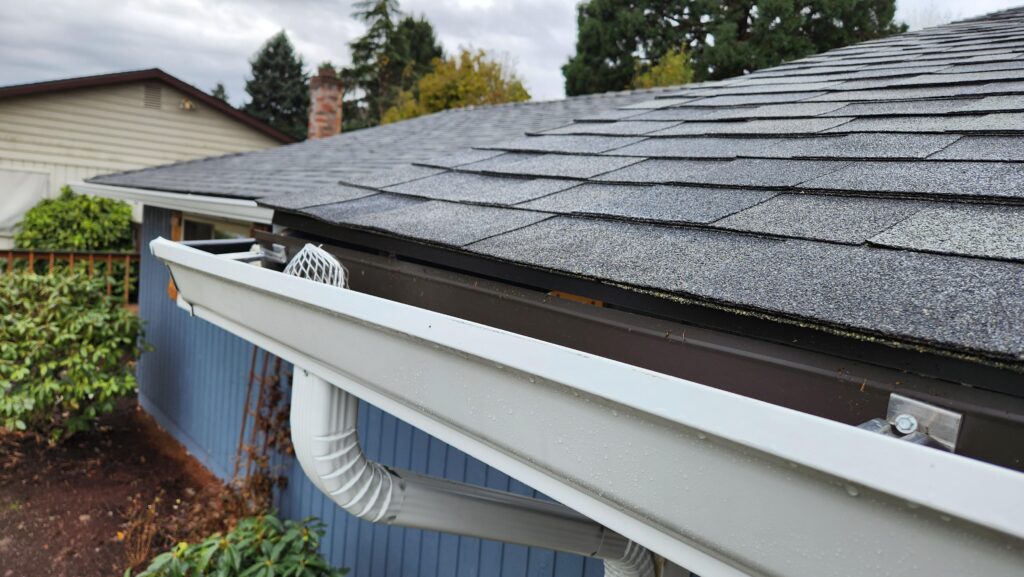
Introduction Gutters play a crucial role in protecting your home from water damage by channeling rainwater away from your roof and foundation. However, over time, gutters can become clogged with leaves, debris, dirt, and even pests, leading to water overflow and potential structural damage. Regular gutter clearing is essential for maintaining the integrity of your home and preventing costly repairs. In this comprehensive guide, we’ll explore the importance of gutter clearing, the best cleaning methods, professional vs. DIY cleaning, and essential maintenance tips to keep your gutters in optimal condition. Why Gutter Clearing is Essential 1. Prevents Water Damage Clogged gutters cause water to overflow, which can lead to leaks, roof damage, and even foundation issues. Keeping gutters clear ensures proper drainage and protects your home from water-related problems. 2. Protects Your Roof When gutters are blocked, rainwater can pool on the roof, leading to rot, mold growth, and shingle deterioration. Regular cleaning prevents moisture buildup and extends the lifespan of your roofing materials. 3. Avoids Foundation Issues Excess water spilling over clogged gutters can accumulate around your home’s foundation, leading to cracks, soil erosion, and basement flooding. Clean gutters help direct water away from the foundation, preventing structural damage. 4. Prevents Pest Infestations Debris-filled gutters create an ideal habitat for pests such as mosquitoes, rodents, birds, and insects. Regular cleaning eliminates these nesting areas and keeps pests away from your home. 5. Reduces the Risk of Ice Dams In colder climates, clogged gutters can trap water, which may freeze and form ice dams. These ice formations can cause serious roof and gutter damage. Keeping gutters clear reduces the risk of ice dams forming in winter. 6. Enhances Curb Appeal Overflowing, dirty gutters can make your home look neglected. Clean gutters contribute to a well-maintained exterior, improving the overall appearance of your property. Common Causes of Gutter Clogs Leaves and Twigs Fallen leaves and small branches from nearby trees are the most common culprits of gutter clogs, especially during autumn. Dirt and Debris Dust, dirt, and airborne particles accumulate over time, creating a sludge-like buildup that can obstruct water flow. Bird Nests and Pest Infestations Birds, squirrels, and insects may build nests in clogged gutters, further restricting drainage and increasing the risk of blockages. Moss and Algae Growth Moisture-retaining debris encourages the growth of moss and algae, which can spread and contribute to clogged gutters. Roofing Material Debris Granules from asphalt shingles and other roofing materials can wash into gutters, accumulating and causing blockages over time. Best Methods for Gutter Clearing 1. Manual Gutter Cleaning This method involves using a ladder, gloves, and a scoop to manually remove debris from the gutters. Pros: Cons: 2. Gutter Cleaning with a Hose A garden hose with a spray attachment can be used to flush out loose debris and dirt. Pros: Cons: 3. Pressure Washing Pressure washers can blast away built-up dirt, moss, and debris, ensuring a thorough cleaning. Pros: Cons: 4. Gutter Vacuum Systems A gutter vacuum uses high-powered suction to remove debris from gutters without the need for ladders. Pros: Cons: 5. Gutter Guards and Screens Installing gutter guards or mesh screens can prevent debris from accumulating in the first place, reducing the frequency of cleaning. Pros: Cons: DIY vs. Professional Gutter Cleaning DIY Gutter Cleaning If you have the right tools and safety precautions, cleaning gutters yourself can be a cost-effective option. Essential Tools for DIY Gutter Cleaning: Safety Tips: Professional Gutter Cleaning Hiring a professional gutter cleaning service ensures a thorough job while minimizing risks. Benefits of Hiring a Professional: Gutter Maintenance Tips 1. Clean Gutters Regularly Schedule gutter cleaning at least twice a year—once in the spring and again in the fall—to prevent blockages. 2. Trim Overhanging Branches Cut back tree branches that extend over your roof to reduce the amount of leaves and twigs that fall into the gutters. 3. Install Gutter Guards Consider adding gutter guards or leaf screens to minimize debris buildup and reduce cleaning frequency. 4. Check for Gutter Leaks Inspect gutters for leaks, rust, or damage. Repair or replace sections as needed to maintain proper function. 5. Ensure Proper Downspout Drainage Make sure downspouts direct water at least five feet away from your home’s foundation to prevent water damage. 6. Inspect After Storms Heavy storms can cause blockages and gutter damage. Check your gutters after major weather events and clear any obstructions. 7. Maintain Roof Health A well-maintained roof reduces the amount of debris that washes into the gutters. Keep shingles, flashing, and chimneys in good condition. Conclusion Gutter clearing is a vital part of home maintenance that prevents water damage, protects your roof and foundation, and enhances your home’s appearance. Whether you choose to clean your gutters yourself or hire a professional, regular maintenance is key to avoiding costly repairs. By following the best practices outlined in this guide, you can ensure your gutters remain clean and functional year-round. If you’re unsure about tackling gutter cleaning yourself, consulting a professional service will provide peace of mind and long-term protection for your home.
Ultimate Guide to Roof Cleaning : Benefits, Methods, and Best Practices
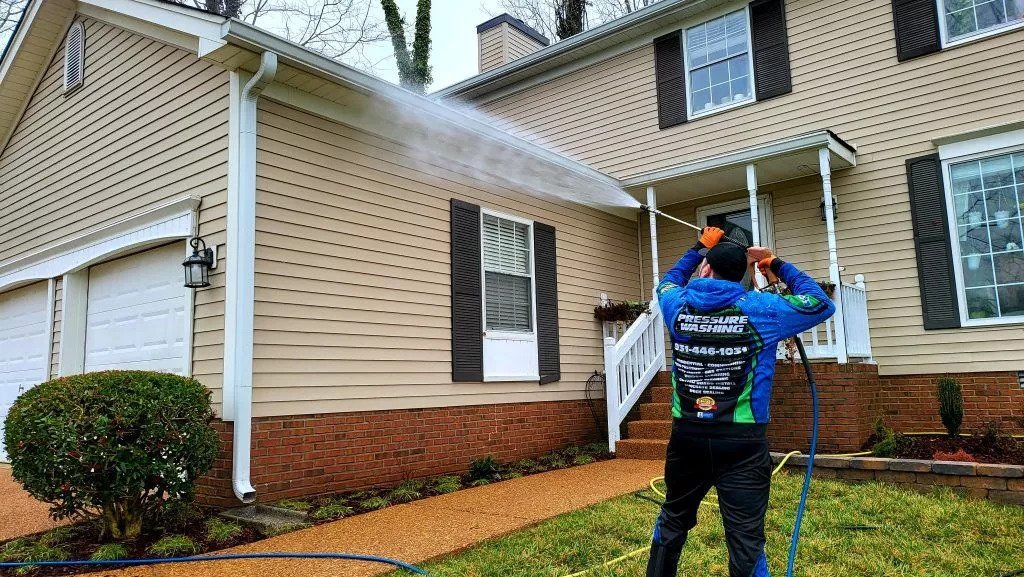
Introduction Your roof is one of the most crucial parts of your home, providing protection from the elements and enhancing your property’s curb appeal. However, over time, roofs accumulate dirt, moss, algae, lichen, and debris, which can lead to serious structural damage if left unaddressed. Regular roof cleaning not only improves the appearance of your home but also extends the lifespan of your roofing materials and prevents costly repairs. In this comprehensive guide, we’ll explore the importance of roof cleaning, the best cleaning methods, professional vs. DIY cleaning, and essential maintenance tips to keep your roof in pristine condition. Why Roof Cleaning is Essential 1. Enhances Curb Appeal A clean roof significantly improves the aesthetics of your home. Stains, moss, and algae can make your home look neglected, which may impact its value if you plan to sell. 2. Extends Roof Lifespan Dirt, algae, and moss can trap moisture, leading to rot and deterioration of roofing materials. Regular cleaning can help prevent premature aging and extend the life of your roof by several years. 3. Prevents Structural Damage Accumulated debris, such as leaves and twigs, can clog gutters and downspouts, leading to water pooling on your roof. This can cause leaks and structural damage over time. 4. Improves Energy Efficiency Dark stains from algae and moss can absorb heat, increasing indoor temperatures and forcing your cooling system to work harder. A clean roof reflects more sunlight, helping regulate indoor temperatures and reducing energy costs. 5. Reduces Health Risks Mold and algae growth on roofs can spread spores into the air, potentially causing respiratory issues and allergies. Cleaning your roof eliminates these harmful contaminants. Common Roof Contaminants Algae Algae, particularly Gloeocapsa magma, appear as black streaks on shingles. They thrive in humid environments and can spread rapidly if not removed. Moss Moss retains moisture, which can lead to roof rot and shingle damage. It often grows in shaded areas and between shingles. Lichen Lichen is a combination of algae and fungus, forming a crusty, hard-to-remove growth that can damage roofing materials over time. Mold & Mildew These fungi can cause stains and deterioration, especially in areas with high humidity and poor ventilation. Debris Leaves, twigs, and dirt can accumulate and clog drainage systems, leading to water damage and roof leaks. Roof Cleaning Methods 1. Soft Washing Soft washing is a low-pressure cleaning method that uses eco-friendly cleaning solutions to break down dirt, algae, and moss. It is ideal for delicate roofing materials such as asphalt shingles and tiles. Pros: Cons: 2. Pressure Washing Pressure washing uses high-pressure water to remove dirt and debris. While effective for concrete and metal roofs, it is not recommended for asphalt shingles as it can strip away the protective granules. Pros: Cons: 3. Manual Cleaning This method involves using a brush or scraper to remove moss and debris manually. It is a slow but effective method, often combined with chemical treatments to prevent regrowth. Pros: Cons: 4. Chemical Roof Cleaning This involves applying special roof-cleaning solutions that kill moss, algae, and mold. Biodegradable and non-toxic options are available for environmentally friendly cleaning. Pros: Cons: DIY vs. Professional Roof Cleaning DIY Roof Cleaning If you have the right tools and knowledge, DIY roof cleaning can be cost-effective. However, working on a roof can be dangerous, and improper techniques can cause damage. Essential Tools for DIY Roof Cleaning: Professional Roof Cleaning Hiring professionals ensures a thorough and safe cleaning process. They use industry-grade equipment and solutions to clean your roof without causing damage. Benefits of Hiring a Professional: Roof Maintenance Tips 1. Regular Inspections Inspect your roof at least twice a year and after major storms to identify early signs of damage or contamination. 2. Clean Gutters Clogged gutters can lead to water buildup and roof damage. Clean gutters regularly to ensure proper drainage. 3. Trim Overhanging Branches Trees near your roof can drop leaves and provide shade for moss and algae growth. Trim branches to prevent debris accumulation. 4. Apply Preventative Treatments Consider applying algaecide or moss inhibitors to prevent regrowth of roof contaminants. 5. Ensure Proper Ventilation Good attic ventilation prevents moisture buildup, reducing the risk of mold and mildew growth on your roof. Conclusion Regular roof cleaning is a vital part of home maintenance that enhances curb appeal, extends roof longevity, and prevents costly repairs. Whether you choose DIY cleaning or hire a professional, ensuring your roof remains free from debris, moss, and algae will protect your investment and keep your home looking its best. By following the best practices outlined in this guide, you can maintain a clean, durable, and efficient roof for years to come. If you’re unsure about tackling roof cleaning yourself, consulting a professional will ensure a safe and effective cleaning process tailored to your roof’s specific needs.
Driveway & Sidewalk Cleaning : The Ultimate Guide to a Pristine Property
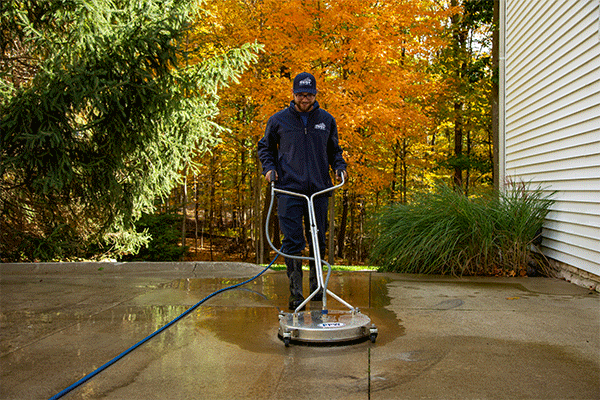
Introduction Your driveway and sidewalks are some of the first things visitors notice about your home or business. Over time, these surfaces accumulate dirt, grime, mold, mildew, oil stains, and other contaminants that not only diminish curb appeal but can also pose safety hazards. Regular driveway and sidewalk cleaning enhances the aesthetics, extends their lifespan, and ensures a safe environment for pedestrians and vehicles. In this guide, we’ll explore the benefits of driveway and sidewalk cleaning, effective cleaning methods, eco-friendly solutions, and professional services to help you maintain a spotless exterior. Why Driveway & Sidewalk Cleaning is Essential 1. Enhances Curb Appeal A clean driveway and sidewalk create a welcoming entrance to your property. Stains, algae, and dirt can make even the most beautiful home or commercial space look neglected. Regular cleaning restores the fresh, new look of your outdoor surfaces. 2. Prevents Damage and Increases Longevity Dirt, grime, and moss buildup can cause surface erosion over time, leading to cracks and deterioration. Cleaning your driveway and sidewalks regularly helps maintain their structural integrity and saves you from costly repairs. 3. Improves Safety Slippery surfaces caused by mold, algae, or oil spills can be hazardous. Routine cleaning reduces the risk of slips and falls, ensuring a safer environment for your family, guests, or customers. 4. Protects Against Weed Growth Weeds growing between cracks can expand and cause severe damage to sidewalks and driveways. Cleaning removes weeds and prevents them from taking root, preserving the condition of your surfaces. 5. Boosts Property Value A well-maintained exterior increases property value and can make a positive impression on potential buyers or tenants. Clean sidewalks and driveways contribute to an overall well-kept property. Best Methods for Driveway & Sidewalk Cleaning 1. Pressure Washing Pressure washing is one of the most effective ways to remove dirt, grime, and stains from concrete, brick, and asphalt driveways and sidewalks. 2. Soft Washing Soft washing involves using low-pressure water combined with special cleaning solutions to gently clean surfaces. 3. Chemical Cleaning Solutions Various chemical cleaners can be used to break down tough stains such as oil, grease, and rust. 4. DIY Cleaning with Household Items For light cleaning, household items like vinegar, baking soda, and dish soap can help. Eco-Friendly Cleaning Solutions Using green cleaning products is an excellent way to maintain your driveway and sidewalk while being environmentally responsible. How Often Should You Clean Your Driveway & Sidewalk? DIY vs. Professional Driveway & Sidewalk Cleaning DIY Cleaning Professional Cleaning Services Hiring a professional service ensures the best results, especially for stubborn stains, large areas, and high-traffic driveways. Choosing the Right Cleaning Service When selecting a professional driveway and sidewalk cleaning service, consider: Common Driveway & Sidewalk Stains and How to Remove Them Preventative Maintenance Tips Conclusion Driveway and sidewalk cleaning is essential for maintaining the beauty, safety, and longevity of your property’s exterior. Whether you choose DIY methods or professional services, regular maintenance will keep your outdoor spaces looking pristine. Investing in proper cleaning techniques will not only enhance curb appeal but also protect your investment in the long run. Need expert driveway and sidewalk cleaning services? Contact a professional cleaning company today to enjoy a spotless and safe outdoor space!
House Exterior Services : The Ultimate Guide to Professional Cleaning

Your home’s exterior is the first thing people notice, and keeping it clean enhances its curb appeal while protecting it from long-term damage. Over time, dirt, grime, mold, and mildew can accumulate on surfaces such as siding, driveways, and roofs, leading to potential deterioration. Professional house exterior cleaning services ensure your home remains in top condition, boosting its value and longevity. In this comprehensive guide, we’ll cover the importance of house exterior cleaning, different services available, and expert tips to maintain a spotless exterior. Why House Exterior Cleaning Is Essential Exterior house cleaning goes beyond aesthetics—it preserves the integrity of your home. Here are some key benefits: Types of House Exterior Cleaning Services Different areas of your home’s exterior require specialized cleaning techniques. Here are the most common services: 1. Pressure Washing Pressure washing uses high-pressure water jets to remove dirt, grime, and stains from hard surfaces. It is ideal for: 2. Soft Washing Soft washing is a gentler alternative to pressure washing, using specialized cleaning solutions to break down dirt and organic growth. It is perfect for: 3. Roof Cleaning Roof cleaning prevents moss, algae, and debris buildup that can lead to leaks and structural damage. Professionals use: 4. Gutter Cleaning Clogged gutters can cause water damage and foundation issues. Gutter cleaning involves: 5. Window Cleaning Exterior window cleaning removes streaks, guruguidebook dirt, and water stains for a spotless finish. Services include: 6. Deck and Patio Cleaning Decks and patios are exposed to weather elements year-round, causing dirt and mold buildup. Professional cleaning includes: 7. Fence Cleaning Over time, fences collect dirt and algae, making them look worn out. Cleaning services involve: Best Practices for Maintaining a Clean Home Exterior DIY vs. Professional House Exterior Cleaning While some cleaning tasks can be done yourself, hiring professionals ensures better results with less risk of damage. DIY Cleaning Pros & Cons ✅ Cost-effective for small tasks ✅ Can be done on your schedule ❌ Requires specialized equipment ❌ Risk of damaging delicate surfaces ❌ Can be time-consuming Professional Cleaning Pros & Cons ✅ High-quality results with expert techniques ✅ Safe and efficient ✅ Access to commercial-grade cleaning solutions ✅ Saves time and effort ❌ Higher upfront cost compared to DIY How to Choose the Right House Exterior Cleaning Service With many companies offering exterior cleaning, consider these factors when choosing a service provider: Conclusion House exterior cleaning is an essential part of home maintenance, ensuring both aesthetic appeal and structural longevity. Whether you opt for pressure washing, soft washing, roof cleaning, or gutter maintenance, regular upkeep prevents costly repairs and maintains your home’s beauty. While DIY methods work for minor tasks, professional cleaning services provide superior results and long-term benefits. By investing in expert exterior cleaning, you can keep your home looking pristine and well-maintained for years to come.
Sealing & Repair : The Ultimate Guide for Long-Lasting Protection
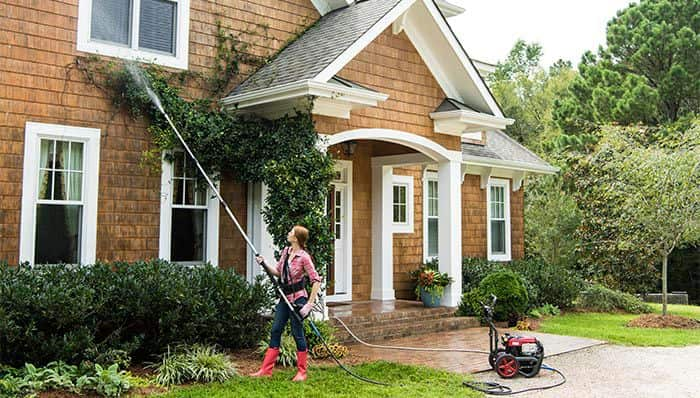
Sealing and repair are essential maintenance practices that help protect and extend the lifespan of various surfaces, including concrete, asphalt, wood, and roofing materials. Over time, surfaces deteriorate due to environmental exposure, heavy usage, and weather fluctuations. Without proper sealing and timely repairs, cracks, leaks, and wear can lead to costly damages. This comprehensive guide will explore everything you need to know about sealing and repair, including its importance, methods, materials, and expert tips for achieving long-lasting results. Why Sealing Is Essential Sealing is a protective process that prevents moisture penetration, UV damage, and general wear and tear. It is widely used on driveways, patios, decks, roofs, and even interior surfaces like countertops and flooring. The primary benefits of sealing include: Types of Sealants for Different Surfaces Different surfaces require specific types of sealants to provide optimal protection. Here are some common sealants and their applications: 1. Concrete Sealers Concrete is a porous material that absorbs water, chemicals, and stains. To prevent deterioration, concrete sealers come in various forms: 2. Asphalt Sealers Asphalt driveways and pavements are prone to cracking due to temperature fluctuations and traffic loads. Common asphalt sealers include: 3. Wood Sealers Wooden decks, fences, and furniture require protection from moisture and rot. Types of wood sealers include: 4. Roof Sealants Roofing materials such as shingles, tiles, and metal sheets require sealing to prevent leaks and extend lifespan. Popular roof sealants include: Common Repair Techniques for Damaged Surfaces Despite sealing, surfaces may still develop damage over time. Here are some effective repair techniques: 1. Crack Filling Small cracks can lead to significant structural problems if left untreated. Use an appropriate filler based on the surface type: 2. Patching For larger holes or deteriorated areas, patching is necessary to restore the integrity of the surface. 3. Waterproofing Waterproofing is crucial for surfaces exposed to constant moisture, such as basements, roofs, and decks. 4. Surface Resurfacing For surfaces with extensive wear, resurfacing can restore their appearance and functionality. Best Practices for Sealing & Repair To achieve long-lasting results, follow these expert recommendations: DIY vs. Professional Sealing & Repair While DIY sealing and repairs can be cost-effective, professional services offer better durability and expertise. Consider hiring a professional if: Conclusion Sealing and repair are essential for maintaining and protecting various surfaces from deterioration. By using the right sealants, applying proper repair techniques, and following expert maintenance tips, you can significantly extend the lifespan of your driveways, decks, roofs, and more. Whether tackling a DIY project or hiring a professional, regular sealing and timely repairs will save you money and preserve the integrity of your surfaces for years to come.
